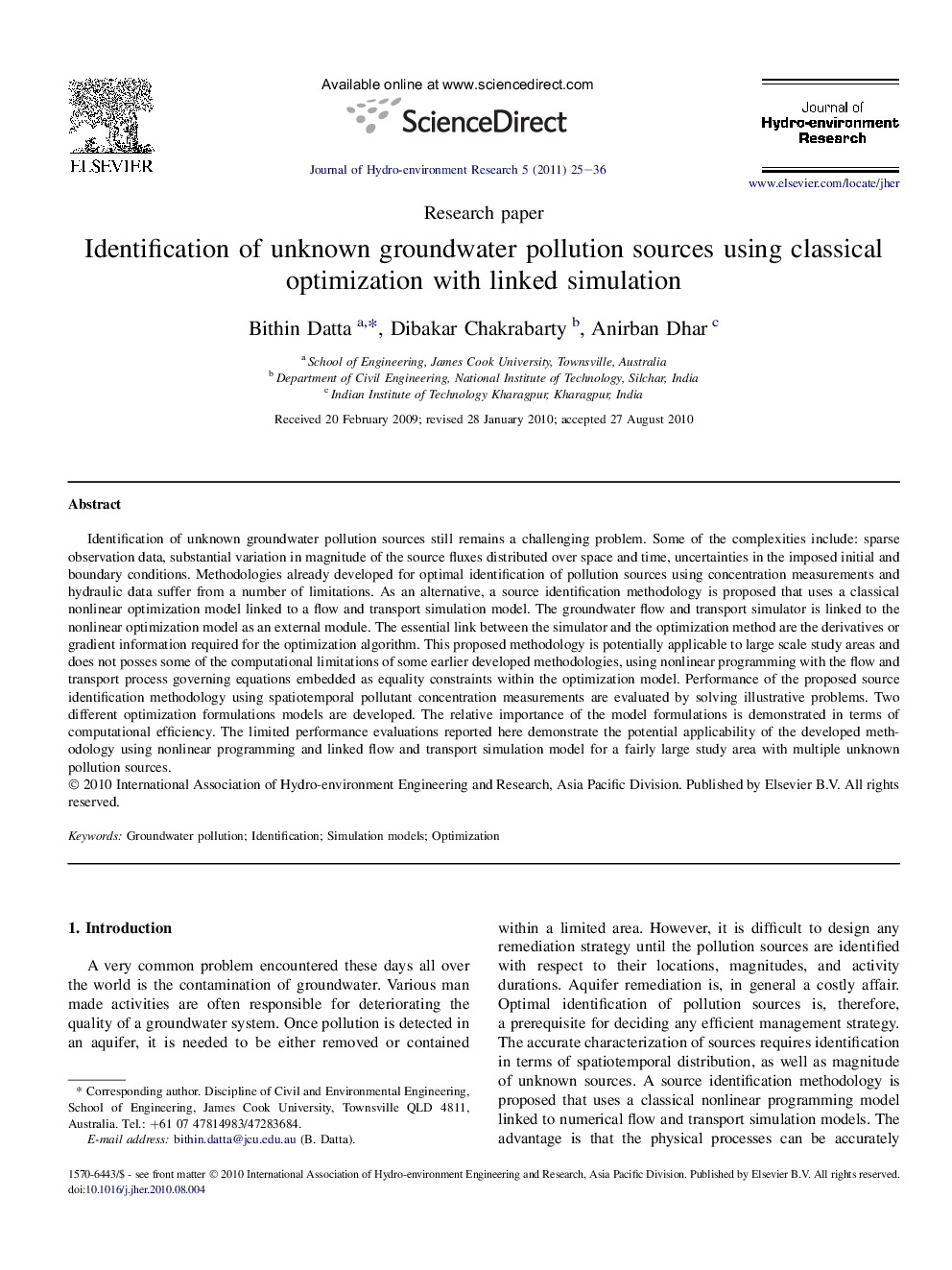| Article ID | Journal | Published Year | Pages | File Type |
|---|---|---|---|---|
| 4493969 | Journal of Hydro-environment Research | 2011 | 12 Pages |
Identification of unknown groundwater pollution sources still remains a challenging problem. Some of the complexities include: sparse observation data, substantial variation in magnitude of the source fluxes distributed over space and time, uncertainties in the imposed initial and boundary conditions. Methodologies already developed for optimal identification of pollution sources using concentration measurements and hydraulic data suffer from a number of limitations. As an alternative, a source identification methodology is proposed that uses a classical nonlinear optimization model linked to a flow and transport simulation model. The groundwater flow and transport simulator is linked to the nonlinear optimization model as an external module. The essential link between the simulator and the optimization method are the derivatives or gradient information required for the optimization algorithm. This proposed methodology is potentially applicable to large scale study areas and does not posses some of the computational limitations of some earlier developed methodologies, using nonlinear programming with the flow and transport process governing equations embedded as equality constraints within the optimization model. Performance of the proposed source identification methodology using spatiotemporal pollutant concentration measurements are evaluated by solving illustrative problems. Two different optimization formulations models are developed. The relative importance of the model formulations is demonstrated in terms of computational efficiency. The limited performance evaluations reported here demonstrate the potential applicability of the developed methodology using nonlinear programming and linked flow and transport simulation model for a fairly large study area with multiple unknown pollution sources.
Research highlights►Methodology for optimal identification of unknown groundwater pollution sources. ►Linking flow and transport numerical simulation with classical nonlinear optimization. ►Capability of incorporating fairly large scale contaminated aquifer study areas. ►Performance evaluations encouraging considering errors and uncertainties.
